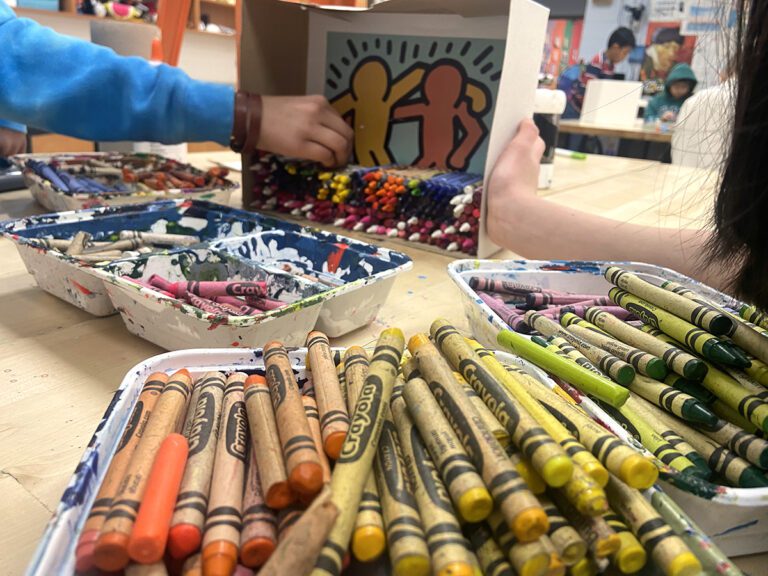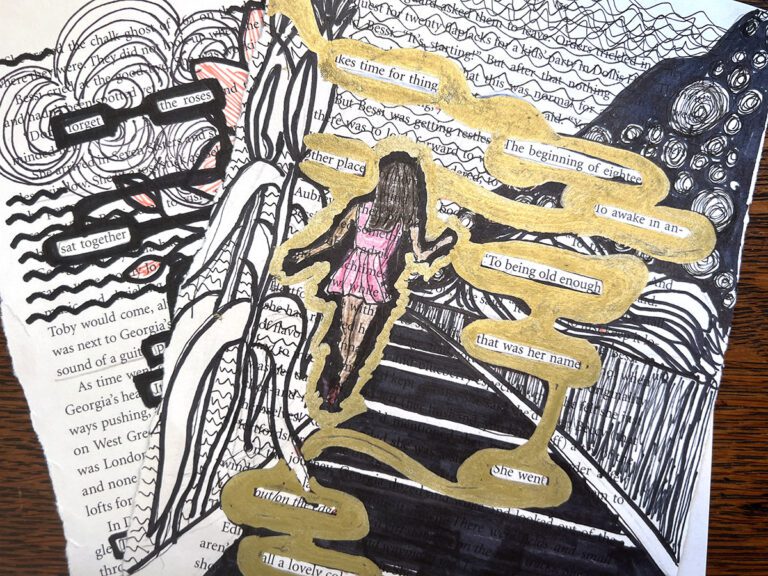Art teachers understand the importance of collaboration. As artists, we constantly share ideas, learn from each other, and create together. As educators, we teach students to collaborate in a variety of ways in our classrooms every day.
Most art teachers teach several different grade levels and hundreds of students. These connections put us in a unique position to collaborate across the school. Yet, with students coming and going all day, it can be a challenge finding the time to plan collaborative lessons with classroom teachers.

Here are 6 tips to help you collaborate with classroom teachers.
1. Become familiar with the core content area standards.
Look over the math, language arts, science, and social studies standards for the grade levels you teach. Do you see any areas that might pair nicely with your art standards? Does second grade study the parts of a plant in science? How could that enhance your program? You will undoubtedly find many interesting connections!
2. Share your art standards with classroom teachers.
Just as you should know what is taught in the other content areas, classroom teachers should be aware of your standards as well. Share a copy of your art standards with the other teachers in your building. Collaboration goes both ways. They may find some great opportunities for cross-curricular lessons, as well as gain a deeper understanding of the value of art!
3. Review the pacing guides for the classes you teach.
As important as it is to know what students learn, when they learn it is of equal importance. If they study the parts of a plant in March, wait until then to teach your lesson. That way you can be sure that students will understand the core concepts before you start your collaborative project.

4. Attend grade-level meetings.
I know, we are all pressed for time, right? Try to find the time to attend grade-level meetings, though. You will find them worthwhile. This is a great way to learn about what teachers are doing with their students. This also helps to build collegial relationships with classroom teachers. It is hard to communicate when you only see teachers at your door as you greet their classes. Taking the time to meet in-person will open lines of communication.
5. Make sure that everyone knows their role.
When implementing collaborative lessons, it’s important that each teacher knows exactly what they are contributing. What, specifically, will the classroom teacher be doing with the students? When will this happen? What will you be doing? You may want to write down your plan to be sure everyone understands what to do. This is a step that is often overlooked, but it is important to the overall success of the project.
6. Make sure that your lessons are ART lessons.
I once had a teacher ask me to make clay maps of our state with her class. Each one would be made using a template and would be identical. Her rationale was that students would be using clay, which made it an art lesson. I had to gently educate her regarding the importance of self-expression and the creative process in art. Just because students are using art materials does not mean that they are making art.
The strongest collaborative lessons challenge students to use what they’ve learned in one discipline to enhance their understanding of another. If you feel like the connection is forced, then don’t do it. Trust your own professional judgment. These lessons should enhance your art curriculum, rather than weaken it.
These guidelines have helped me to build strong relationships with classroom teachers. The resulting lessons have engaged students in valuable cross-curricular learning. We all know that art connects to all other content areas. By working with colleagues to bring these experiences to our students, we educate everyone involved about the power of art.
How do you collaborate with teachers in your school?
What are some of the best collaborative lessons you’ve taught?
Magazine articles and podcasts are opinions of professional education contributors and do not necessarily represent the position of the Art of Education University (AOEU) or its academic offerings. Contributors use terms in the way they are most often talked about in the scope of their educational experiences.





